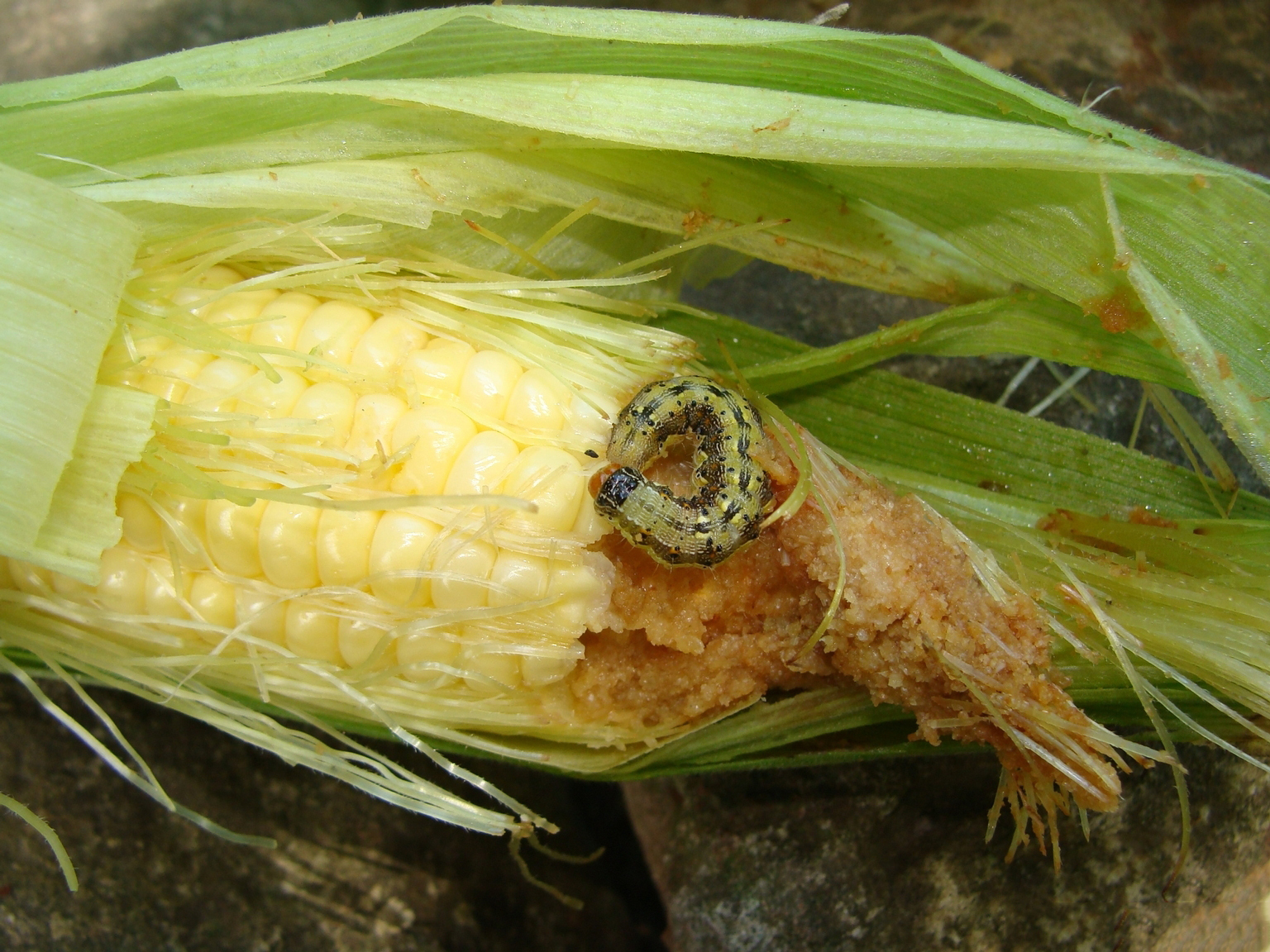Overview
The corn earworm is a major pest affecting over 100 crops, of which the most prominent varieties are corn, sorghum, cotton, aubergine, pepper, and tomato. They primarily feed on flowers and fruit from the host plant, as well as on the corn of immature cobs and ears. Adults of corn earworm are nocturnal, since they react to light radiation at night and are attracted to light traps, especially using ultraviolet light. This capture method, together with aggregation sex pheromone traps, are population monitoring tools for moths. They have regular migratory habits, seeking warm or mild climates, since the cold reduces or halts their development.
Life cycle and appearance of the corn earworm
The eggs of corn earworm are a milky-white colour, which turn dark grey before hatching, and have a ribbed spherical shape. The larvae hatch after around four days. The corn earworm caterpillars go through six larval instars, over a total period of two to three weeks, developing a greyish colour and a black cephalic capsule in the first stage, but later adopting a variety of colours such as green, brown, pink, and yellow. Other features are its size in the final instar (approximately 35 mm) and its longitudinal stripes on the body. When the larva has fully developed, it stops feeding and descends onto the ground to bury itself around 10-12 cm deep. This prepupal stage takes one to two days. It then pupates for ten to fourteen days, or three to five months in areas with very cold winters. The pupae measure around 18 mm and have a slightly shiny brown colour. The adults have a brown-coloured body, with a wingspan of 35 to 40 mm and a dark stripe on the side edge of the forewings and hindwings; they live for around two and a half weeks.
Damage symptoms
The female lays small quantities of eggs, between one and three, in the hairs of green ears of corn. The larvae feed on the hairs of the young corn and on the young kernels at the tip of the cob. During the third instar, the larvae turn cannibalistic, with only one caterpillar surviving, which will start to feed again on the tip of the cob, making holes in the corn. In other crops, they prefer flower buds and soft fruit. They cause visible damage through feeding, and some larvae can also be seen on the surface. However, they usually hide within the organelle, leaving an entry hole as their only visible trace, which makes it necessary to open the crop to detect the pest.
